Abstract
Regional myocardial perfusion rates were estimated from the myocardial washout of 133Xenon in 24 patients with heart disease whose coronary arteriograms were abnormal and 17 similar subjects whose coronary arteriograms were judged to be normal. Disappearance rates of 133Xe from multiple areas of the heart were monitored externally with a multiple-crystal scintillation camera after the isotope had been injected into a coronary artery and local myocardial perfusion rates were calculated by the Kety formula.
The mean myocardial perfusion rates in the left ventricle exceeded those in the right ventricle or atrial regions in subjects without demonstrable coronary artery disease. In this group there was a significant lack of homogeneity of local perfusion rates in left ventricular myocardium; the mean coefficient of variation of left ventricular local perfusion rates was 15.8%.
In the patients with radiographically demonstrable coronary artery disease, a variety of myocardial perfusion patterns were observed. Local capillary blood flow rates were depressed throughout the myocardium of patients with diffuse coronary disease but were subnormal only in discrete myocardial regions of others with localized occlusive disease. Local myocardial perfusion rates were similar to those found in the group with normal coronary arteriograms in patients with slight degrees of coronary disease and in those areas of myocardium distal to marked coronary constrictions or occlusions which were well supplied by collateral vessels.
In subjects with right coronary disease, the mean right ventricular perfusion rates were significantly subnormal; in seven subjects of this group perfusion of the inferior left ventricle by a dominant right coronary artery was absent or depressed. The average mean left ventricular perfusion rate of 12 subjects with significant disease of two or more branches of the left coronary artery was significantly lower than that of the group with normal left coronary arteriograms. In the patients with abnormal left coronary arteriograms, the average coefficient of variation of local left ventricular perfusion rates was significantly increased (24.8%).
The studies provide evidence that coronary artery disease is associated with increased heterogeneity of local myocardial perfusion rates. They indicate that radiographically significant vascular pathology of the right or left coronary artery may be associated with significant reductions of myocardial capillary perfusion in the region supplied by the diseased vessel.
Full text
PDF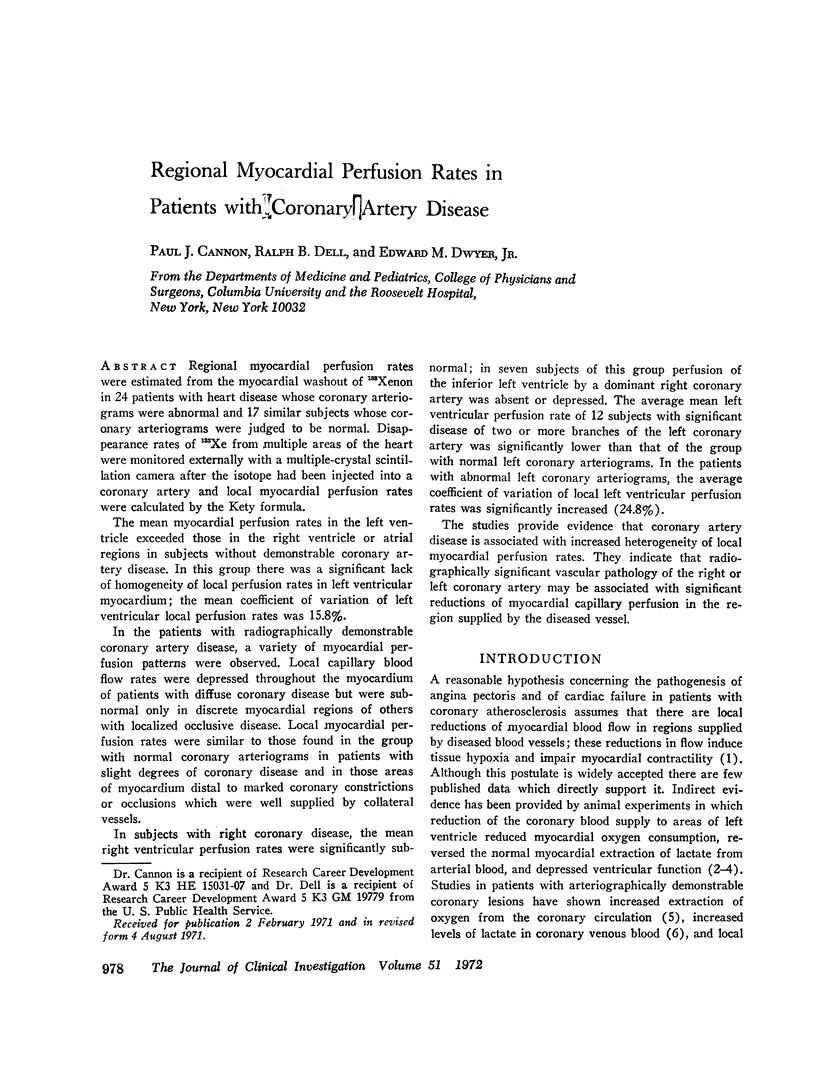
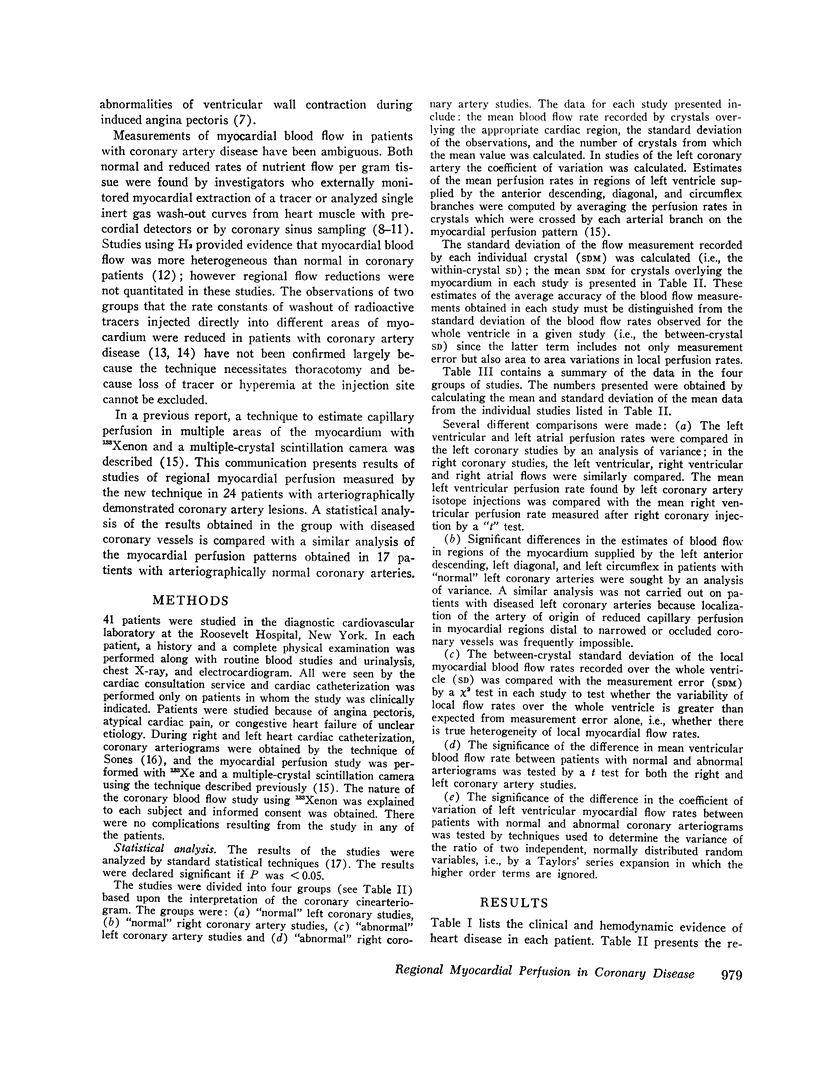
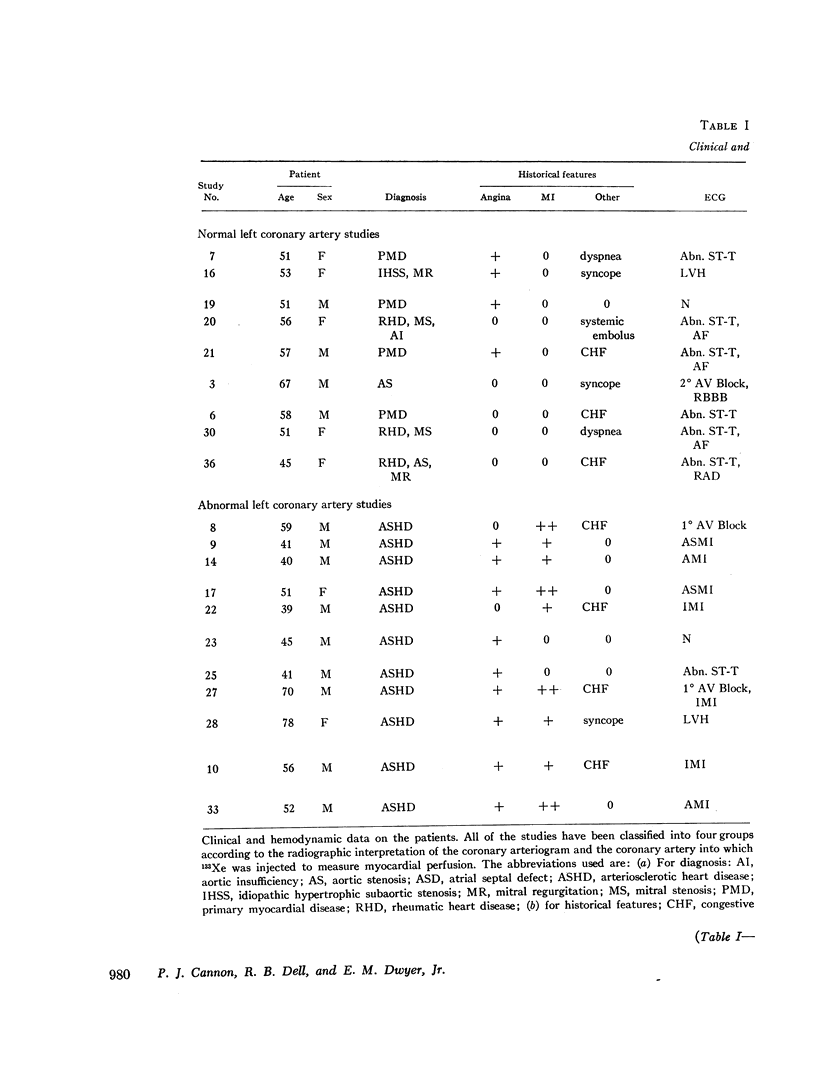
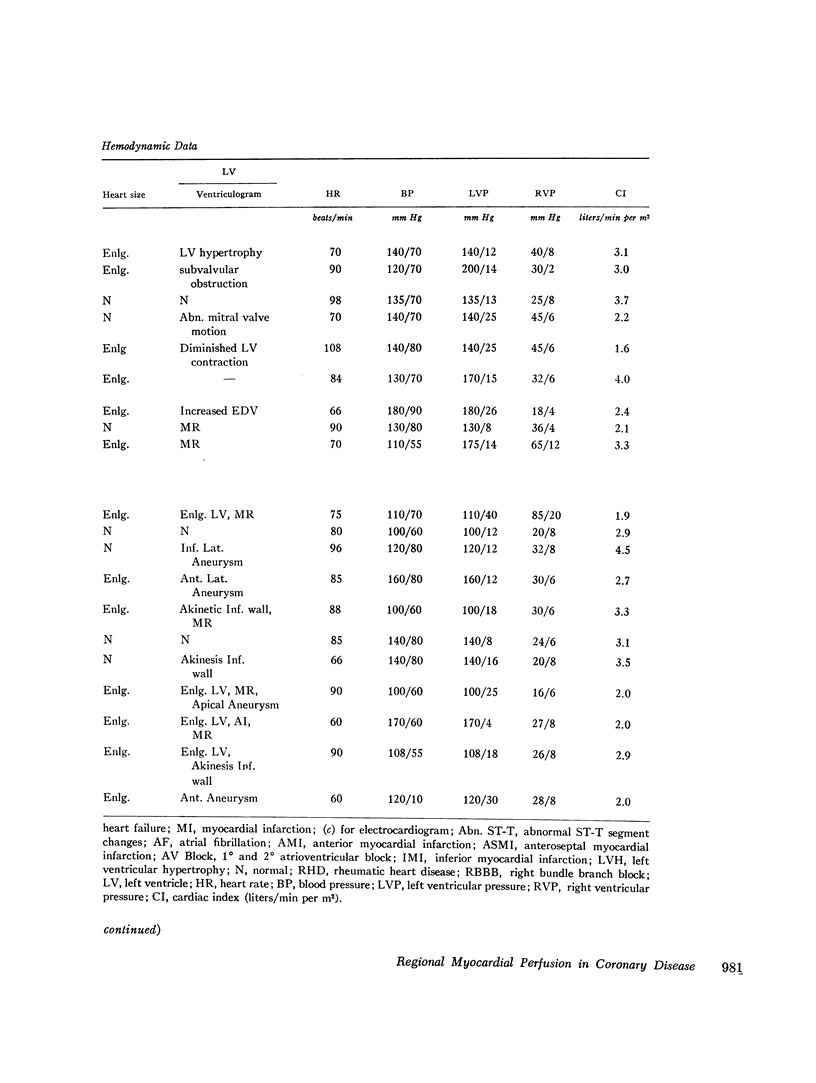
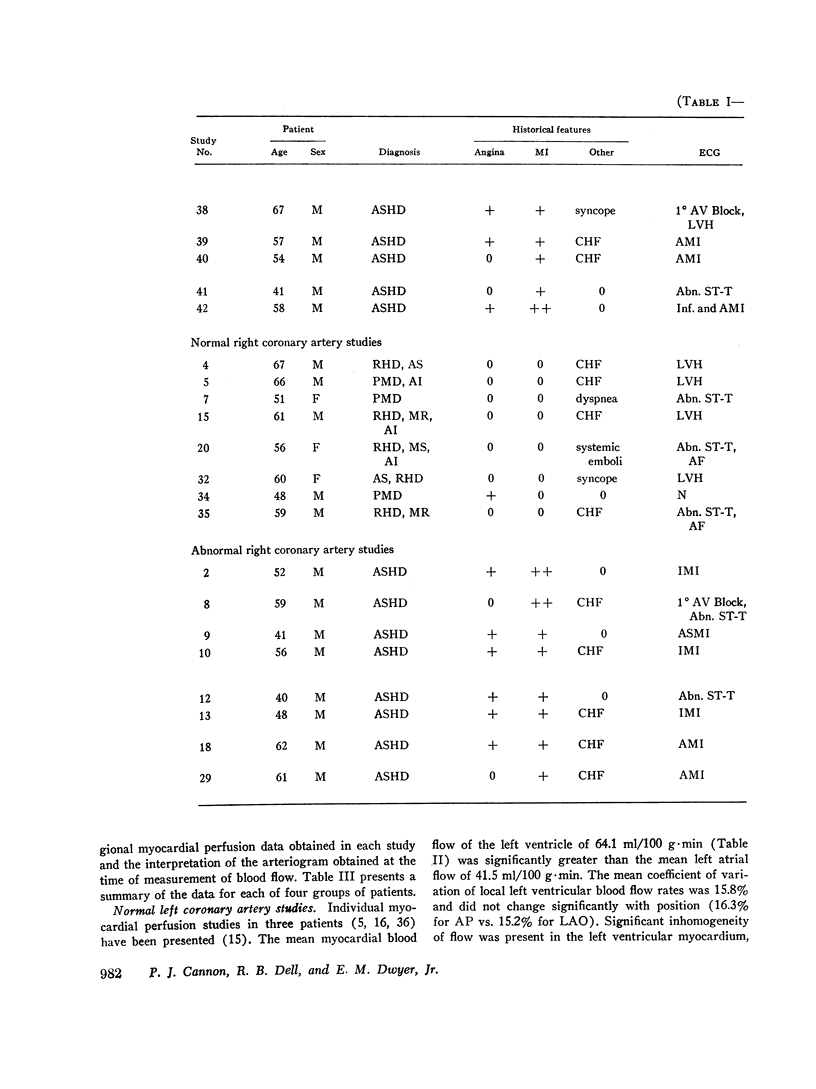
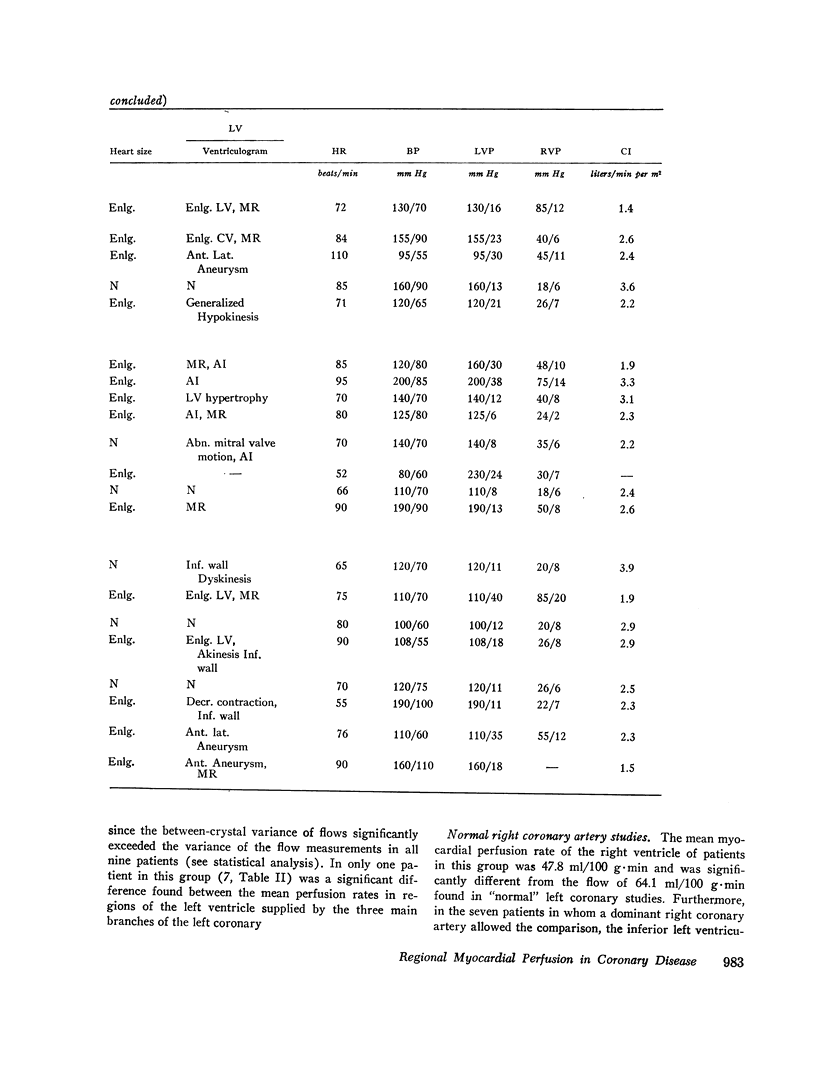
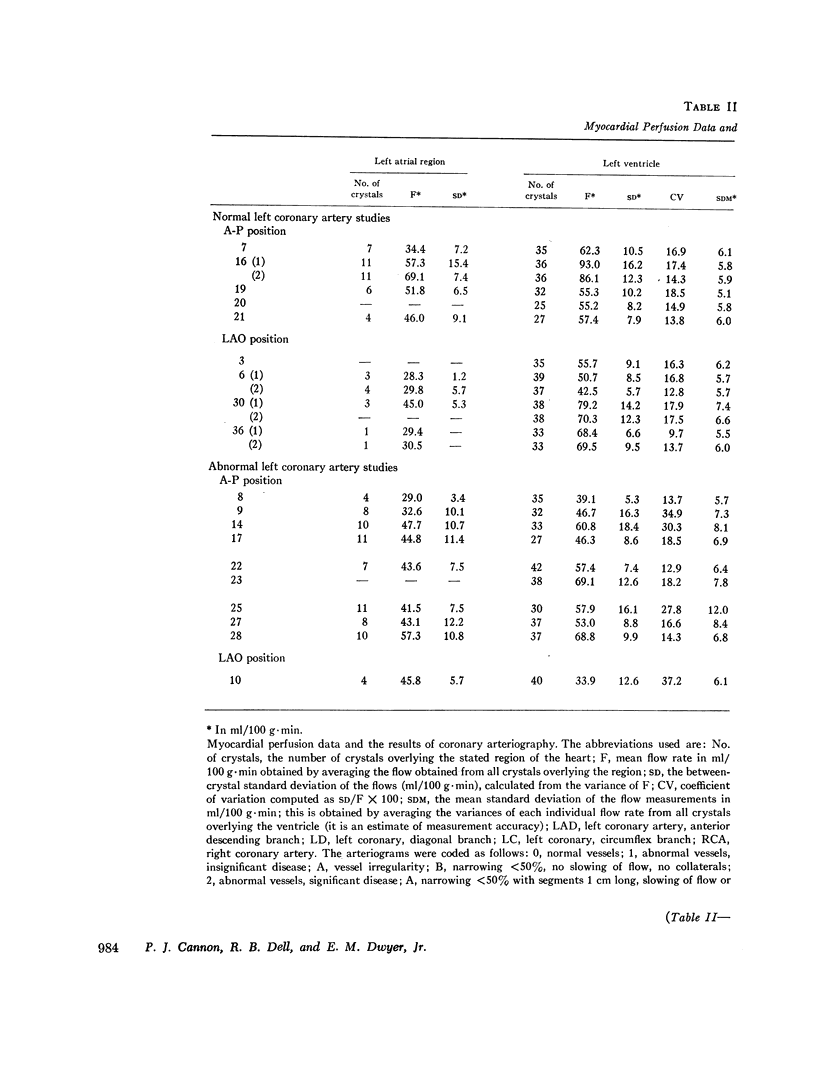
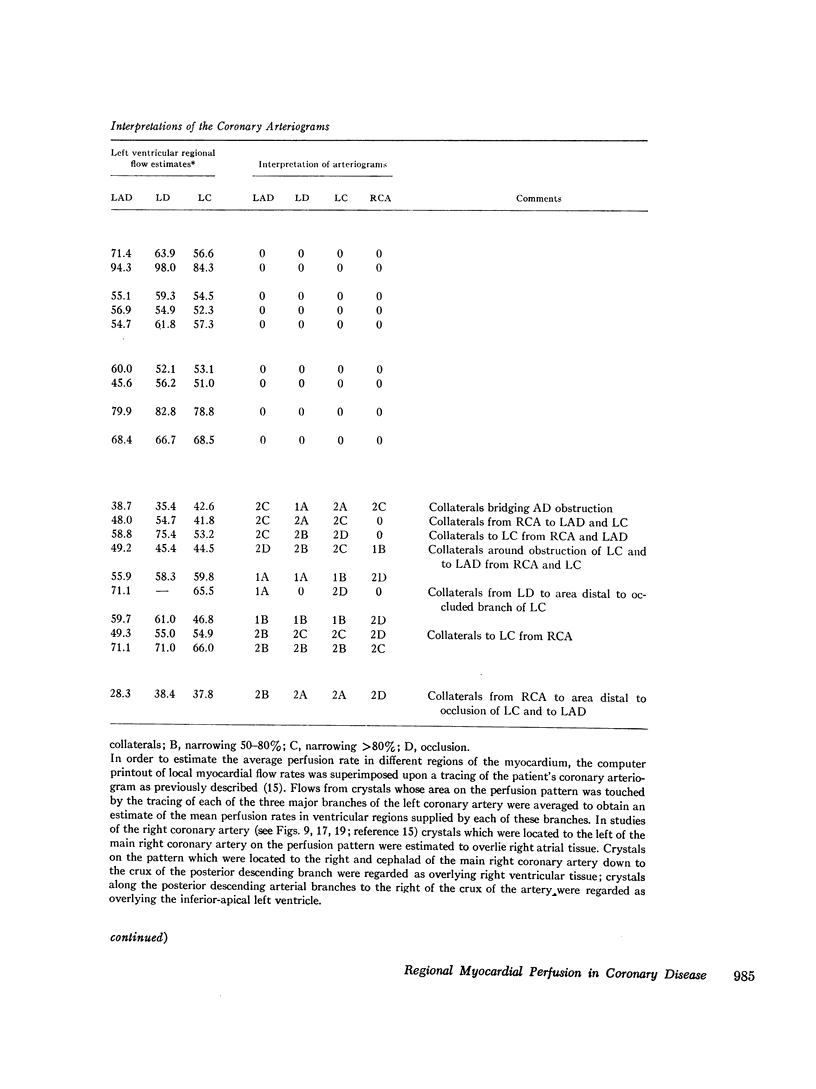
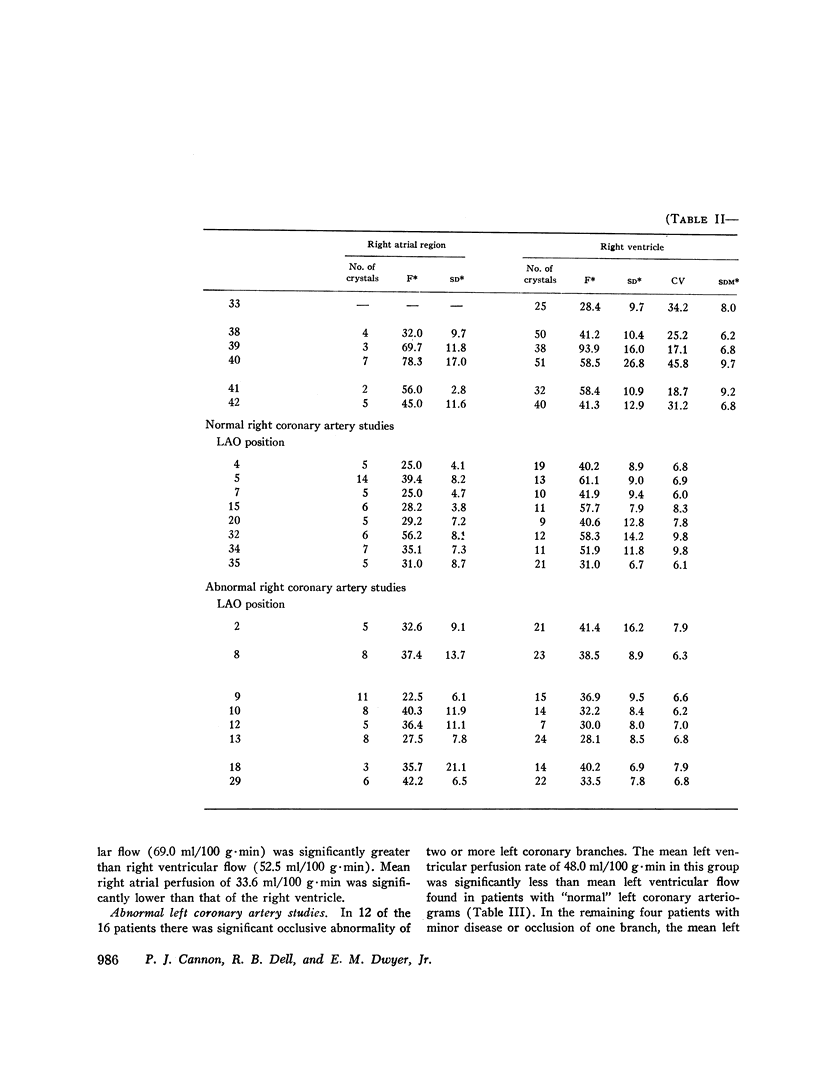

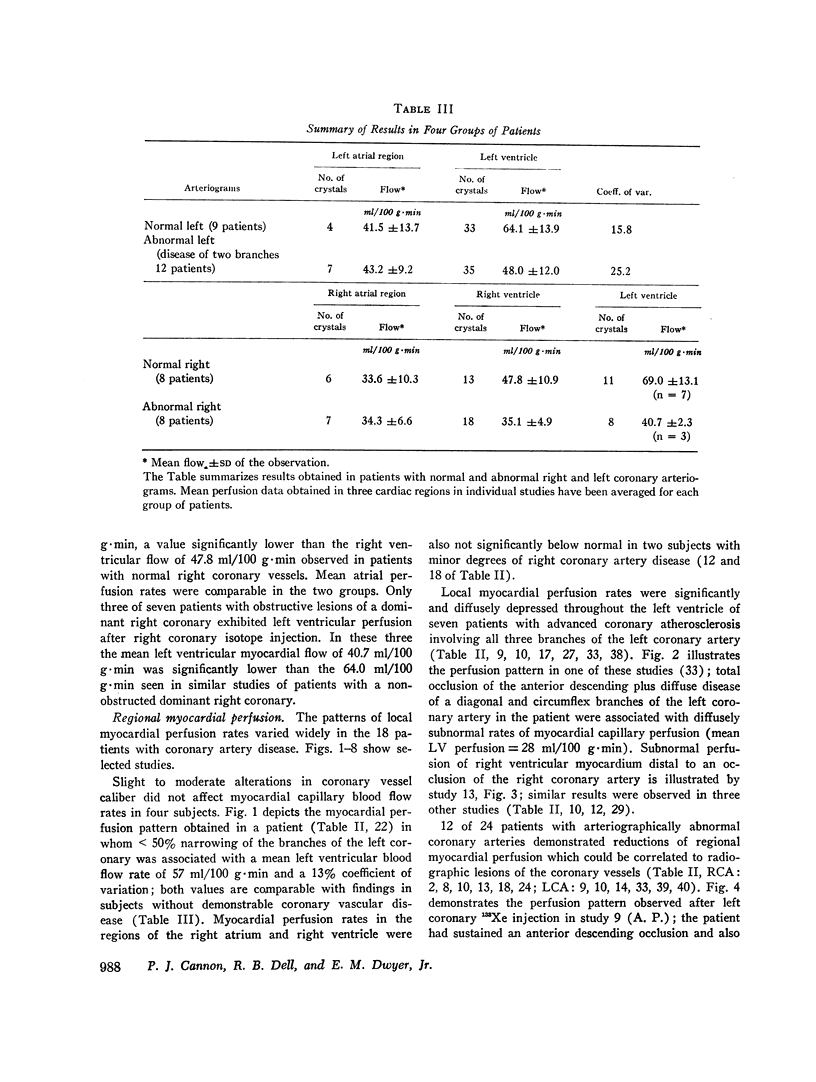
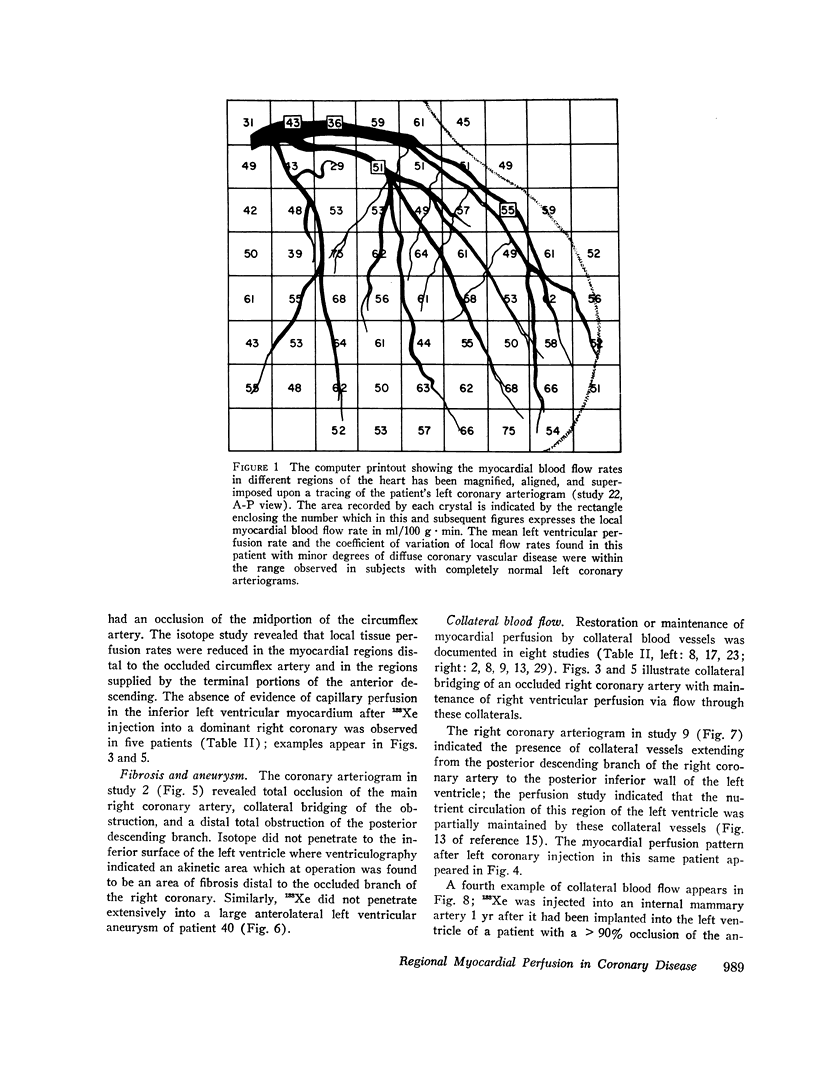
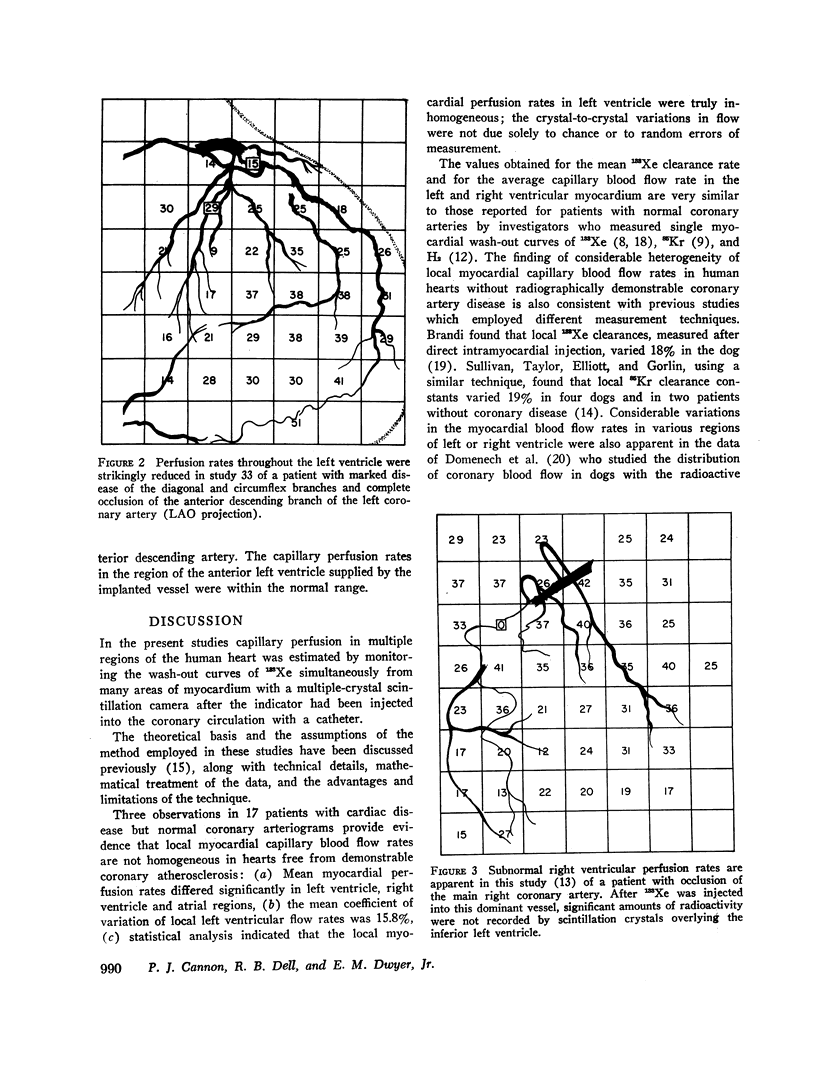
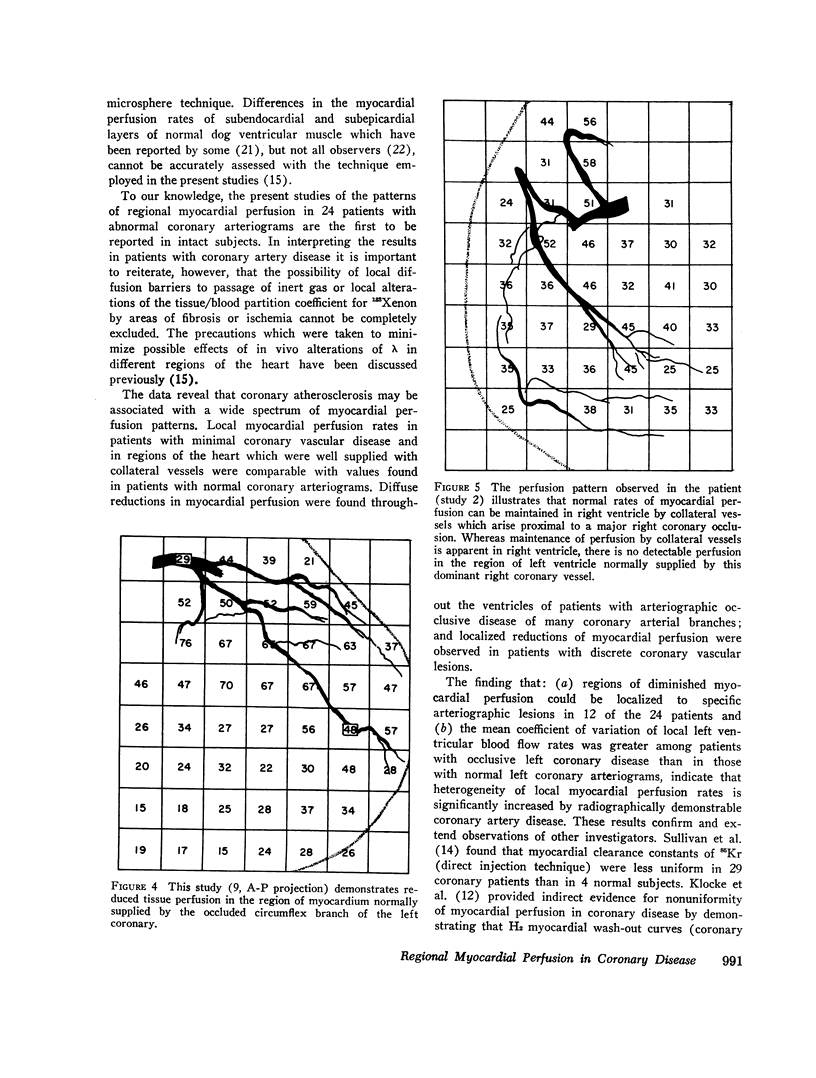
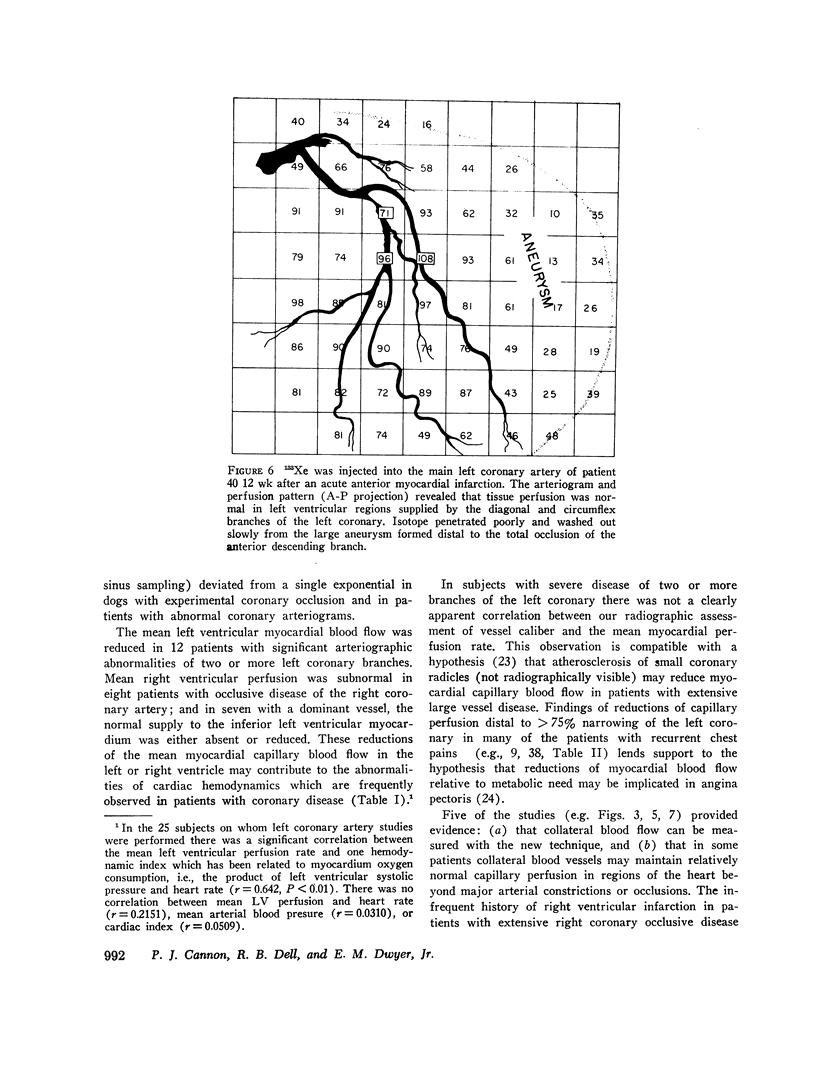
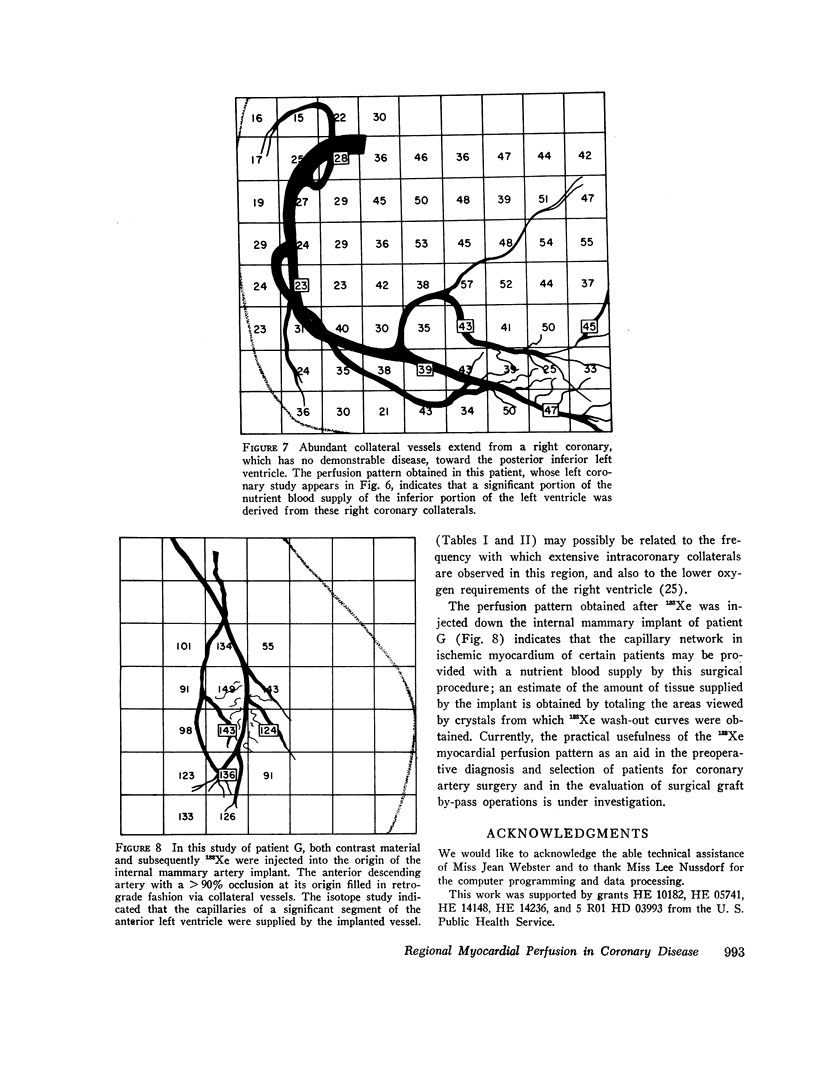
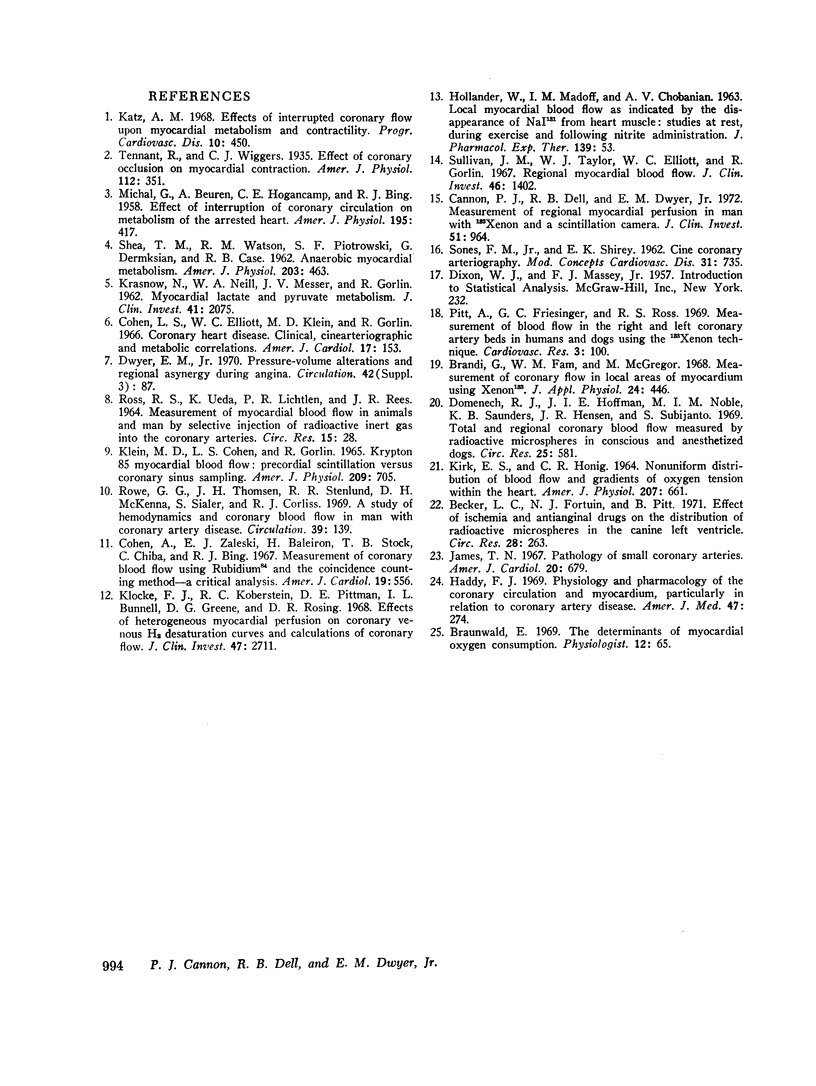
Selected References
These references are in PubMed. This may not be the complete list of references from this article.
- Becker L. C., Fortuin N. J., Pitt B. Effect of ischemia and antianginal drugs on the distribution of radioactive microspheres in the canine left ventricle. Circ Res. 1971 Feb;28(2):263–269. doi: 10.1161/01.res.28.2.263. [DOI] [PubMed] [Google Scholar]
- Brandi G., Fam W. M., McGregor M. Measurement of coronary flow in local areas of myocardium using xenon 133. J Appl Physiol. 1968 Mar;24(3):446–450. doi: 10.1152/jappl.1968.24.3.446. [DOI] [PubMed] [Google Scholar]
- Braunwald E. Thirteenth Bowditch lecture. The determinants of myocardial oxygen consumption. Physiologist. 1969 May;12(2):65–93. [PubMed] [Google Scholar]
- Cannon P. J., Dell R. B., Dwyer E. M., Jr Measurement of regional myocardial perfusion in man with 133 xenon and a scintillation camera. J Clin Invest. 1972 Apr;51(4):964–977. doi: 10.1172/JCI106891. [DOI] [PMC free article] [PubMed] [Google Scholar]
- Cohen A., Zaleski E. J., Baleiron H., Stock T. B., Chiba C., Bing R. J. Measurement of coronary blood flow using rubidium-84 and the coincidence counting method. A critical analysis. Am J Cardiol. 1967 Apr;19(4):556–562. doi: 10.1016/0002-9149(67)90422-5. [DOI] [PubMed] [Google Scholar]
- Cohen L. S., Elliott W. C., Klein M. D., Gorlin R. Coronary heart disease. Clinical, cinearteriographic and metabolic correlations. Am J Cardiol. 1966 Feb;17(2):153–168. doi: 10.1016/0002-9149(66)90347-x. [DOI] [PubMed] [Google Scholar]
- Domenech R. J., Hoffman J. I., Noble M. I., Saunders K. B., Henson J. R., Subijanto S. Total and regional coronary blood flow measured by radioactive microspheres in conscious and anesthetized dogs. Circ Res. 1969 Nov;25(5):581–596. doi: 10.1161/01.res.25.5.581. [DOI] [PubMed] [Google Scholar]
- HOLLANDER W., MADOFF I. M., CHOBANIAN A. V. Local myocardial blood flow as indicated by the disappearance of Nal-131 from the heart muscle: studies at rest, during exercise, and following nitrite administration. J Pharmacol Exp Ther. 1963 Jan;139:53–59. [PubMed] [Google Scholar]
- Haddy F. J. Physiology and pharmacology of the coronary circulation and myocardium, particularly in relation to coronary artery disease. Am J Med. 1969 Aug;47(2):274–286. doi: 10.1016/0002-9343(69)90153-3. [DOI] [PubMed] [Google Scholar]
- James T. N. Pathology of small coronary arteries. Am J Cardiol. 1967 Nov;20(5):679–691. doi: 10.1016/0002-9149(67)90012-4. [DOI] [PubMed] [Google Scholar]
- KIRK E. S., HONIG C. R. NONUNIFORM DISTRIBUTION OF BLOOD FLOW AND GRADIENTS OF OXYGEN TENSION WITHIN THE HEART. Am J Physiol. 1964 Sep;207:661–668. doi: 10.1152/ajplegacy.1964.207.3.661. [DOI] [PubMed] [Google Scholar]
- KRASNOW N., NEILL W. A., MESSER J. V., GORLIN R. Myocardial lactate and pyruvate metabolism. J Clin Invest. 1962 Nov;41:2075–2085. doi: 10.1172/JCI104665. [DOI] [PMC free article] [PubMed] [Google Scholar]
- Klein M. D., Cohen L. S., Gorlin R. Krypton 85 myocardial blood flow: precordial scintillation versus coronary sinus sampling. Am J Physiol. 1965 Oct;209(4):705–710. doi: 10.1152/ajplegacy.1965.209.4.705. [DOI] [PubMed] [Google Scholar]
- Klocke F. J., Koberstein R. C., Pittman D. E., Bunnell I. L., Greene D. G., Rosing D. R. Effects of heterogeneous myocardial perfusion on coronary venous H2 desaturation curves and calculations of coronary flow. J Clin Invest. 1968 Dec;47(12):2711–2724. doi: 10.1172/JCI105954. [DOI] [PMC free article] [PubMed] [Google Scholar]
- MICHAL G., BEUREN A., HOGANCAMP C. E., BING R. J. Effect of interruption of coronary circulation on metabolism of the arrested heat. Am J Physiol. 1958 Nov;195(2):417–423. doi: 10.1152/ajplegacy.1958.195.2.417. [DOI] [PubMed] [Google Scholar]
- Pitt A., Friesinger G. C., Ross R. S. Measurement of blood flow in the right and left coronary artery beds in humans and dogs using the 133Xenon technique. Cardiovasc Res. 1969 Jan;3(1):100–106. doi: 10.1093/cvr/3.1.100. [DOI] [PubMed] [Google Scholar]
- ROSS R. S., UEDA K., LICHTLEN P. R., REES J. R. MEASUREMENT OF MYOCARDIAL BLOOD FLOW IN ANIMALS AND MAN BY SELECTIVE INJECTION OF RADIOACTIVE INERT GAS INTO THE CORONARY ARTERIES. Circ Res. 1964 Jul;15:28–41. doi: 10.1161/01.res.15.1.28. [DOI] [PubMed] [Google Scholar]
- Rowe G. G., Thomsen J. H., Stenlund R. R., McKenna D. H., Sialer S., Corliss R. J. A study of hemodynamics and coronary blood flow in man with coronary artery disease. Circulation. 1969 Jan;39(1):139–148. doi: 10.1161/01.cir.39.1.139. [DOI] [PubMed] [Google Scholar]
- SHEA T. M., WATSON R. M., PIOTROWSKI S. F., DERMKSIAN G., CASE R. B. Anaerobic myocardial metabolism. Am J Physiol. 1962 Sep;203:463–469. doi: 10.1152/ajplegacy.1962.203.3.463. [DOI] [PubMed] [Google Scholar]
- SONES F. M., Jr, SHIREY E. K. Cine coronary arteriography. Mod Concepts Cardiovasc Dis. 1962 Jul;31:735–738. [PubMed] [Google Scholar]
- Sullivan J. M., Taylor W. J., Elliott W. C., Gorlin R. Regional myocardial blood flow. J Clin Invest. 1967 Sep;46(9):1402–1412. doi: 10.1172/JCI105632. [DOI] [PMC free article] [PubMed] [Google Scholar]


